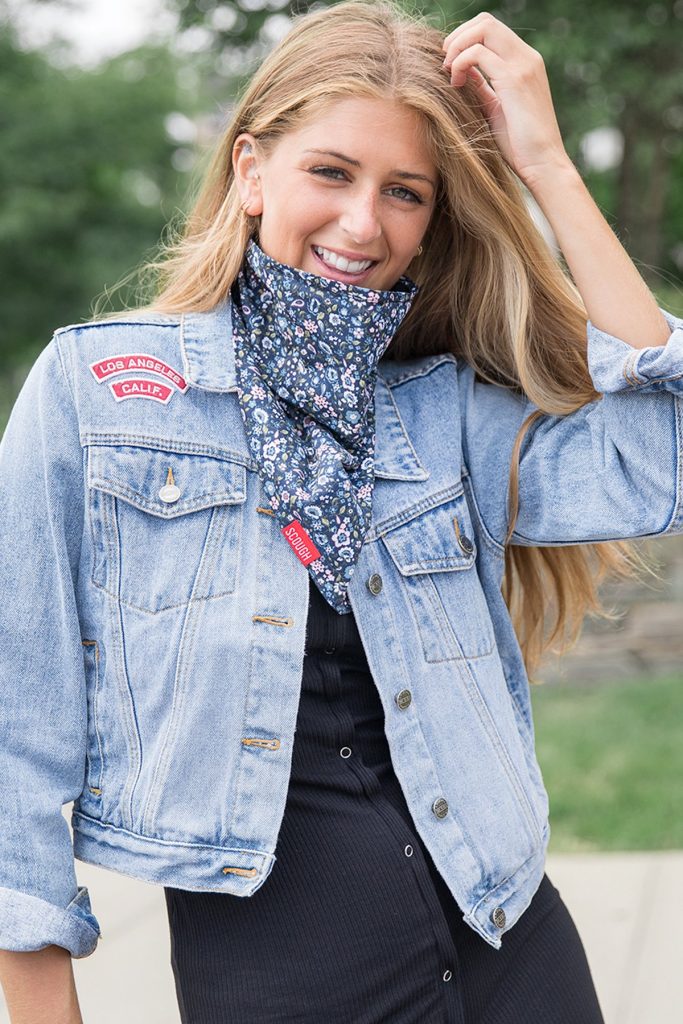The U.S. CDC (Centers for Disease Control and Prevention), WHO (World Health Organization), and general wellbeing authorities prescribe wearing face masks to control the spread of the novel Covid, which causes COVID-19. Individuals are currently wearing a wide range of sorts of face covers, including bandanas, hand-sewn masks, and expendable clinical masks. By and large, mask decision is subject to accessibility; individuals use what they have. However, how viable are every one of these face covers?
Study the various kinds of face masks and their viability in containing drop spread from coughs, sneezes, and conversation.
– Bandana
A bandana is a three-sided or square piece of fabric that is regularly worn as a head or neck covering. Keeping dust and other contaminants out of the respiratory system is as simple as tying a bandana around the mouth and nose. (That is the reason cowhands utilized them during gatherings.)
Bandanas give some assurance against beads and hack or wheeze related “shower.” Without any sort of nose or mouth covering, drops can splash in excess of 8 feet, as per research from Florida Atlantic University. Wearing a bandana can diminish that to around 4 feet.
– Homemade material mask
As indicated by an article distributed in The Journal of Family Practice, single-layer masks may just give 1% molecule filtration. A two-layer cotton mask sift through about 35% of little particles, so they offer individual security to the wearer. Cotton face masks can diminish bead shower from 8 feet to 2 ½ inches, which lessens the measure of conceivably infection containing particles you discharge into the air (were you to be tainted and not know it.)
The adequacy of a custom made material face mask to a great extent relies on its development. As indicated by Johns Hopkins Medicine, thickly woven cotton textures, like sewing cotton, are ideal. Single-layer texture masks are less compelling than twofold layer masks, which might be less powerful than triple-layer masks.
– T-shirt mask
Various online instructional exercises tell the best way to make a face mask from an old T-shirt. Shirt masks are modest and simple to make, however they’re not the best. As indicated by a recent report distributed in Disaster Medicine and Public Health Preparedness, T-shirt masks are 33% as powerful as dispensable careful masks.
The potential gain of T-shirt masks: they’re agreeable, as the marginally stretchy material adjusts to the face. You might have the option to build the viability of a T-shirt mask by utilizing more than one layer of material.
– Store-purchased material mask
The viability of a locally acquired fabric mask will rely upon its development. As indicated by Johns Hopkins Medicine, you should search for a mask with at any rate three layers of texture; preferably, you need a mask developed from tight-weave 100% cotton material.
An ordinary fabric face mask “is most likely at any rate 50%” defensive, while “great masks could be 80-95 percent defensive, and even inferior quality masks made of exceptionally slight materials could in any case be 10-20 percent defensive,” as per Steffen Eikenberry, a postdoctoral researcher at Arizona State University who’s examined the viability of masks.
Neck gaiters and balaclavas
Outside lovers frequently have neck gaiters (basically, a container of texture that is worn around the neck and can be pulled up or down, depending on the situation, to ensure the face and neck) or balaclavas (tight-fitting pieces of clothing that cover the head and neck) on hand. These can be utilized as mouth and nose covers and may give some assurance against spread of the novel Covid.
Note: numerous gaiters are made of manufactured texture, and engineered texture doesn’t appear to be as compelling in forestalling the spread of little particles as common strands, like cotton. Likewise, a new report found that neck gaiters made of engineered downy may accomplish more mischief than anything since they basically aerosolize the wearer’s respiratory drops.
Expendable careful mask
These level, flimsy, paper-like masks are normally white and light blue. As indicated by a recent report distributed in Aerosol Science and Technology, careful face masks can sift through about 60% of more modest, breathed in particles. They are essentially expected to stop beads, splashes and splatters, and studies have shown that industriously wearing careful masks out in the open spaces can fundamentally decrease the spread of respiratory disease.
Careful masks are not intended to be utilized more than once. In a perfect world, you ought to discard a mask in the wake of wearing it.
